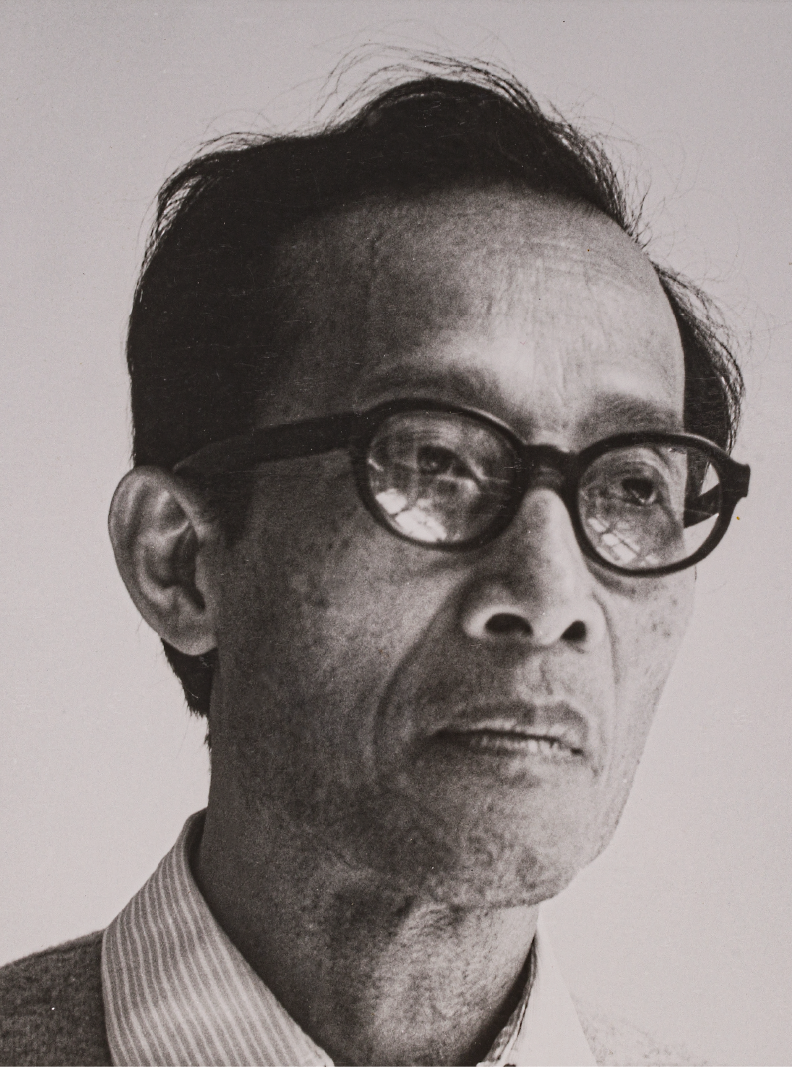
Trần Phúc Duyên was born on 16 February 1923 in Hanoi. His parents were Mr. Trần Diễn Giệm and Madame Nguyễn Thị Thược. His paternal home-village was Phượng Dực in Phú Xuyên district, Hà Tây province, and his mother was from Bạch Mai village of Hanoi.
His family belonged to the upper class of Vietnamese society in late 19th and early 20th century. His father was sent to France to study as a child. Upon his return to Vietnam, Giệm opened a carpentry workshop named Phúc Mỹ at Number 1 Dieulefils Street (currently Đặng Dung Street). Phúc Mỹ soon became a household name in Hanoi furniture-making industry in the early 20th century. Duyen’s family established an early and close relationship with l’École des Beaux-Arts de l’Indochine, and was chosen to construct the mahogany ceiling for the room to exhibit lacquered items at the Colonial Exhibition in Paris in 1931. Mr. Giệm was a founding member of the Société annamite d’Encouragement de l’Art et de l’Industrie, or S.A.D.E.A.I., with Victor Tardieu being the Head.
In 1941, he entered the preparatory class taught by Nam Sơn and Tô Ngọc Vân and in 1942 passed the entrance exam to become a student of Class XVI, together with Quang Phòng, Đinh Minh, Cao Xuân Hùng, Lê Phả, Nguyễn Văn Thanh, Phan Thông and Võ Lăng. Phúc Duyên’s class never had the chance to finish their 5-year curriculum as the school was closed after Japan’s coup de force in 1945. The knowledge and skills acquired, however, provided the strong foundation for Duyen’s later career.
Trần Phúc Duyên lived and worked in Hanoi between 1948 – 1954. His lacquer atelier and gallery was located at 148 Route du Grand Buddha–now Quan Thánh Street. According to his journal, Trần Phúc Duyên received plenty of orders from Vietnamese bourgeois families, managers of foreign companies, French officials and military high-ranking officers, as well as members of the Bảo Đại cabinet. In 1950, three lacquer works by Duyên were purchased by the government including a six-panel lacquer screen depicting Thầy pagoda as gifts for the Jubilee of Pope Pius XII. The lacquer screen was then kept in the Vatican Museum. Jan 1952, Trần Phúc Duyên held his first solo exhibition in Sài Gòn with 30 lacquer paintings.
In late 1954, Trần Phúc Duyên moved to France with his two brothers: Trần Phúc Chí and Trần Phúc Trường. He continued pursuing his passion, came to study at the atelier of artist Jean Souverbie (1891–1981) at l’École des Beaux-Arts de Paris and paint with oil to earn money. In Paris, he was determined to work with lacquer even though it was almost impossible to find raw materials and suitable weather to work with “son ta”. Duyên’s solo exhibition in Nice, presenting 20 silk and 20 lacquer paintings marked his return to the art scene in France.
Before moving to settle in Switzerland, Trần Phúc Duyên had 8 solo exhibitions in Spain, France and Switzerland. From 1969 to 1993, he had 13 more solo exhibitions including one in France in 1970, one in Canada in 1975 and several in Switzerland in 1971, 1973, 1976, 1978, 1979, 1983 and 1989. In his exhibition in 1983, Duyên published his first and only book about his lacquer arts.
Toward the end of his life, he practiced meditation every day and the Zen spirit instilled his works, self-representative in transient spaces, blissful quietude and equanimity. On the 9th of September 1993, at 70, Trần Phúc Duyên passed away peacefully in his sleep